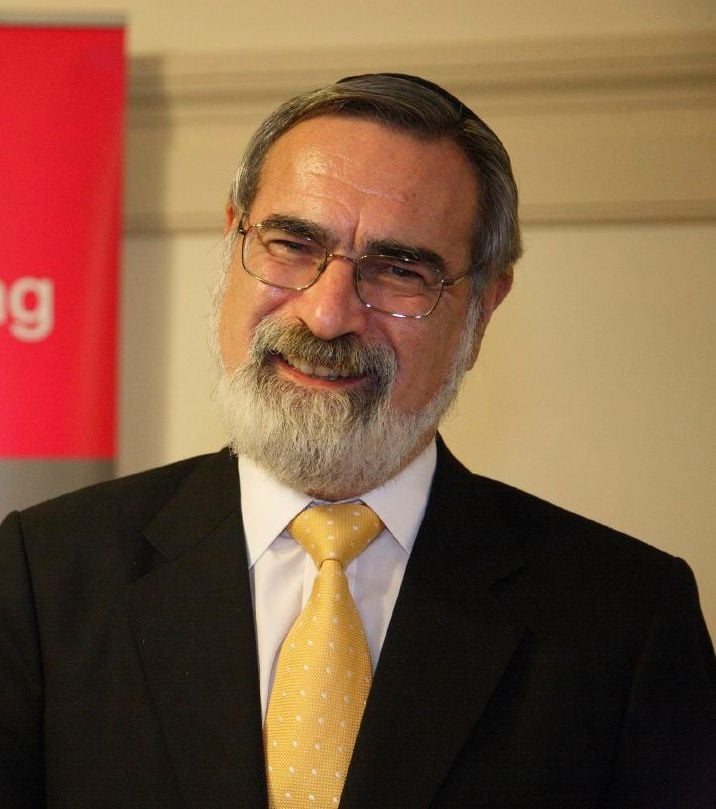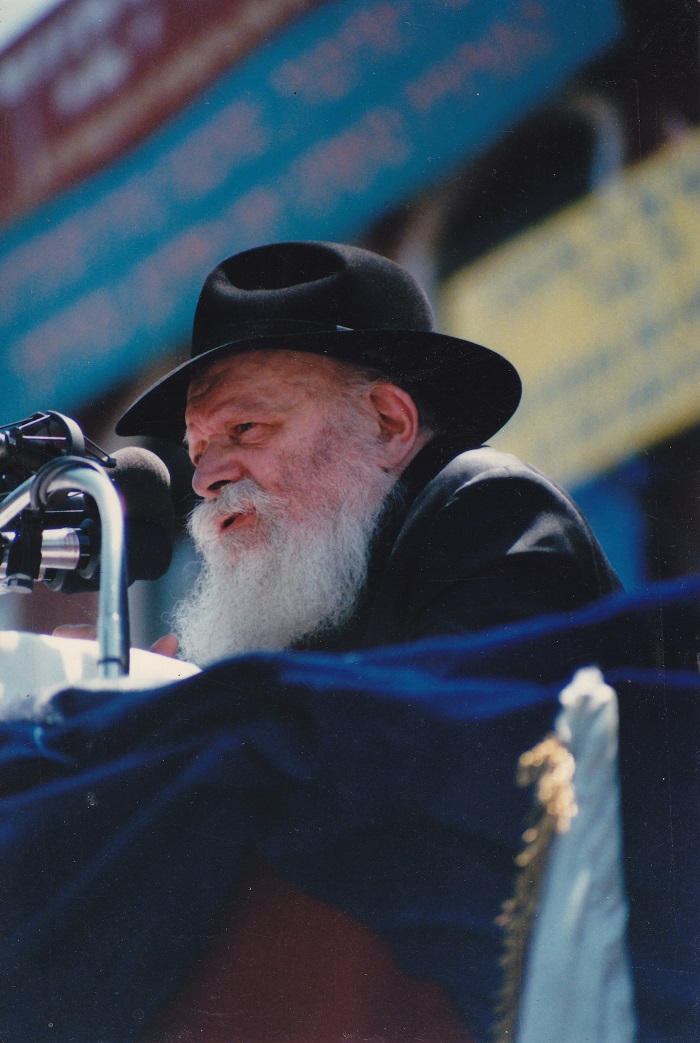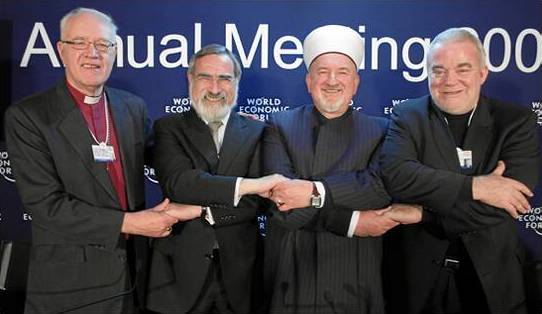A few weeks ago I came across a BBC debate that had been held between the former Chief Rabbi of the United Hebrew Congregations of the Commonwealth, the late Jonathan Sacks zt”l, and the evolutionary biologist, Richard Dawkins. It was a fascinating war of words between two intellectual powerhouses: one of the participants was the spiritual father of scientific atheism, who devoted his life to assaulting G-d and creationism, and the other was one of the greatest Jewish theologians of all times, who devoted his life to defending G-d and faith. Apart from the mesmerizing subject matter itself, it was hard not to be impressed by the class, the restraint, the mutual respect, the dignified manner, the perfectly worded arguments, and the complete proficiency in a broad range of disciplines. In short, 75 minutes of a brain spa.
While watching the debate between Sacks and Dawkins, I found myself imagining what the famous Disputation of Barcelona had looked like. It took place in the 13th century under the order of the King of Aragon, who summoned Nachmanides – also known as the Ramban – to the royal palace in order to participate in a debate with Christian clergymen.
Describing Sacks as a theologian is not an arbitrary characterization. He was a spokesperson not only of Judaism, but also of all religions, whatever and wherever they may be. With all his heart and all his soul, Sacks believed that religion is not merely something relevant in our day and age. Rather, he maintained that religion is even vital to us as a spiritual antibiotic in a dismal postmodern world that detaches individuals from their social contexts and flattens them out into their biological elements.
“Religion and science are completely different things, and neither negates the other. They are as unlike as poetry and prose, or song and speech, or a portrait of a person and an MRI scan.” Sacks wrote those words in his monumental book, The Great Partnership. He also said that “science takes things apart to see how they work. Religion puts things together to see what they mean. And we need them both, the way we need the two hemispheres of the brain.”
Ya’akov Zvi (Jonathan Henry) Sacks was born into a simple Orthodox Jewish family who emigrated to England at the beginning of the 20th century. Like many other immigrants from Eastern Europe, his family made their way up from the overcrowded and poverty-stricken East End to the more comfortable neighborhoods of North London. From a young age, Jonathan stood out thanks to his rhetorical skills and he excelled in a number of areas. He initially chose to study Philosophy, and not just at any academic institution, but at the best of the best – Cambridge University. In his book Radical Then, Radical Now, an older Sacks describes the excitement that overwhelmed him when as a young student he passed through the gates of the esteemed university for the first time. The old and stately buildings, the electrifying intellectual ambience, the spacious libraries – all made a huge impression on the young Jew Sacks, who was grateful for having been given the opportunity to walk down the paths that giants such as Newton, Darwin, Milton and many others had tread on when they entered the pantheon of this centuries-old institution.

If you could have asked him at the time what he thought he would be when he grew up, it is highly unlikely that his answer would have been the Chief Rabbi of Britain. According to Rabbi Dr. Ido Pachter, “Rabbi Sacks did not grow up in the classic religious milieu. When a student at Cambridge University, his heart and mind were deeply entrenched in the world of philosophy. But similar to the Jewish people, it was greatness that chose him.”
Two events rerouted his path in life, diverting him from a thriving academic career to his eventual appointment as Chief Rabbi of the United Hebrew Congregations of the Commonwealth. That shift in focus later made him a link in the chain of spiritual geniuses who, despite everything, were determined to continue believing in divine morality. The first event was his interaction with his doctoral supervisor, Sir Bernard Williams, who was one of the greatest moral philosophers of his time and a sworn atheist. According to Sacks, the numerous debates they had “built up his religious muscle.” The other event occurred during a trip to the United States where he met with the head of Yeshiva University, Rabbi Joseph B. Soloveitchik, and with the leader of the Chabad movement, the Lubavitcher Rebbe. Sacks would later say about the Rebbe that “the Divine stared at me through his eyes.”
The impact of meeting the two spiritual giants of the Jewish people in the 20th century, and in particular the request made by the Lubavitcher Rebbe that Sacks utilize his talents to bring Jews closer to their Judaism and that he assume a leadership position in the community, led to a total revision of his plans. He registered for rabbinical studies and was later ordained at Jews’ College, where for 12 years he was a disciple of Rabbi Nachum Eliezer Rabinovitch. It took little time for the latter to recognize Sacks’s extraordinary abilities and while still a first-year student, Rabinovitch made him a teacher “because the best way to learn is by teaching.”

There are many intellectuals who have impressive panoramic knowledge and there are quite a few talented writers, but only the most outstanding among them are blessed with both a rare intellect and the ability to write. Sir Isaiah Berlin, another descendant of Jewish emigrants from Eastern Europe, was one of them. And so was Sacks. His writing combined simple wisdom, an unusual clarity of thought, and phenomenal expertise in a wide range of disciplines – psychology, sociology, physics, philosophy and history. Sacks translated that innate ability into multiple works that included the authorship of dozens of books, lectures and articles.
And the human element was present as well. As in the case of other Jewish scholars, it was easy to listen to Sacks. His voice was soft and pleasant in tone, but also powerful and self-confident. He was not a man of monologues, but rather one of dialogues. World leaders – including the former British Prime Minister, Tony Blair, Prince Charles and Queen Elizabeth II – admired his wisdom and would often consult with him. In many ways, he was like the sages of the Golden Age of Spain, such as Samuel Ha-Nagid and Don Isaac Abarbanel, who were welcome guests in the courts of kings who sought their advice.

The reputation that Rabbi Sacks built was mostly known in the United Kingdom. He was one of a select few to be given a life peerage in the British House of Lords and, in 2005, he was also knighted by the Queen. But it was only after his death, which occurred one year ago this week, that his philosophical treatises started gaining increasing popularity here in Israel as well. His filmed lectures have gone viral, his books are circulated in unprecedented numbers, and scores of articles have been published about his philosophical positions and works, creating a lot of buzz.
One of the main reasons for this burgeoning interest is the fact that Rabbi Sacks had the unique ability to underscore what unites us and not what divides us, pointing us in the direction of what we share, as opposed to pitting us against each other. His philosophical works and commentaries spoke to a very wide audience without comprising the quality and depth of what he had to say. We can only regret that it took so much time to celebrate who he was.